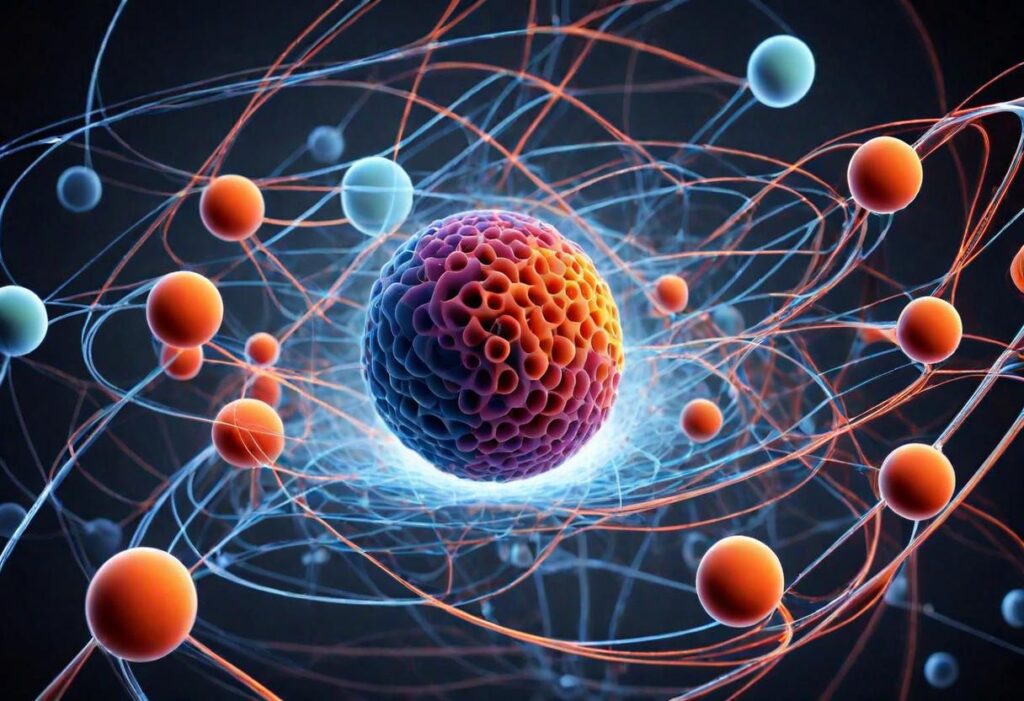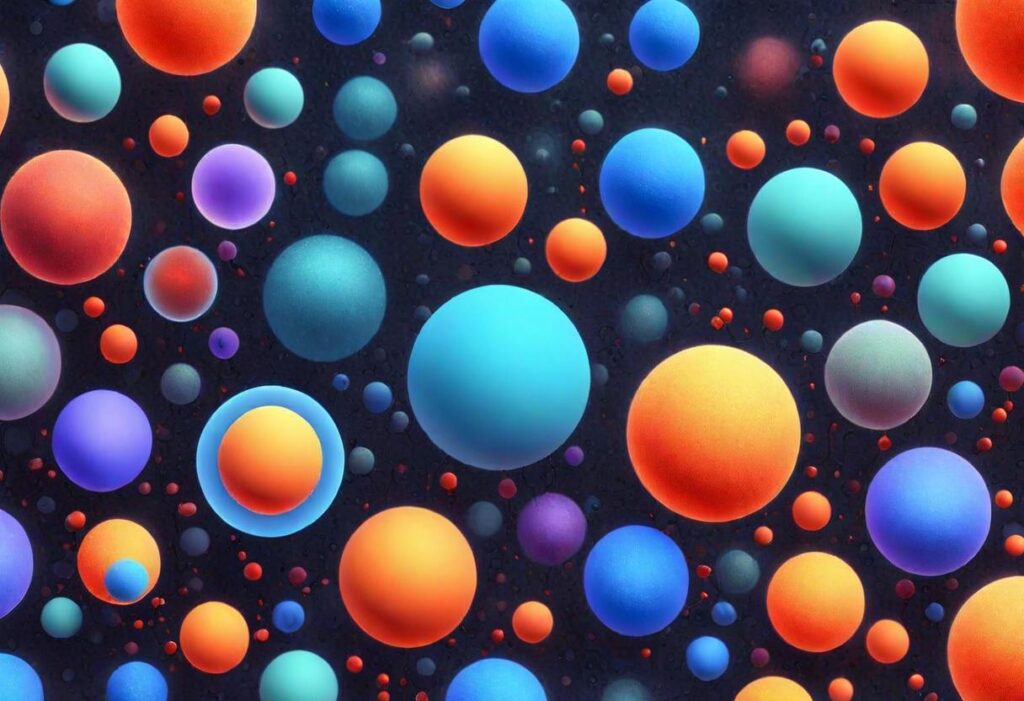Welcome, intrepid chemists, to the fascinating world of matter! Everything you see around you, from the air you breathe to the chair you sit on, is made up of tiny particles. In this introductory topic of IB Chemistry, we’ll embark on a journey to understand the fundamental building blocks of our universe – atoms and molecules.

Understanding the particulate nature of matter is the foundation upon which all of chemistry rests. It helps us explain the properties of different substances, how they react with each other, and why they behave in the way they do. Just like understanding the alphabet is crucial for reading a book, grasping the particulate nature of matter is essential for deciphering the language of chemistry.
Imagine everything around you being built with microscopic Lego bricks. These bricks, in our chemical world, are called atoms. They are the smallest units of matter that can still retain the properties of an element. Think of an element like a specific Lego color (red, blue, etc.). Atoms come in different varieties, each with a unique identity determined by the number of protons (positively charged particles) in their nucleus.
Now, these tiny atoms don’t always roam around alone. They can come together and form even smaller building blocks called molecules. Imagine snapping a few Lego bricks together to create a new structure. Molecules are formed when two or more atoms are chemically bonded together. Water (H2O) is a great example – two hydrogen atoms (H) and one oxygen atom (O) join forces to create a water molecule.
Here’s the exciting part: these tiny particles aren’t just sitting still! They are constantly in motion, vibrating and bouncing around. The faster they move, the higher their kinetic energy. Imagine shaking a box of Lego bricks – the more vigorously you shake it, the faster the bricks move. Temperature plays a crucial role in this dance. As a substance heats up, its particles gain kinetic energy and move faster. Conversely, when a substance cools down, the particles slow down.
Have you ever wondered why ice is solid, water is liquid, and air is a gas? The answer lies in the arrangement and motion of the particles.
Chemistry is all about rearranging these tiny building blocks. During a chemical change, the bonds between atoms are broken and reformed, resulting in the formation of new substances with entirely different properties. Imagine taking apart your Lego creation and using the same bricks to build something completely new. For example, when iron (Fe) reacts with oxygen (O2) to form rust (Fe2O3), the atoms have rearranged to create a new substance with different properties.
This introduction is just the first step in our exciting exploration of the chemical world. As we delve deeper into IB Chemistry, we’ll learn more about the structure of atoms, different types of chemical bonds, and how these play a crucial role in shaping the properties of matter and the way substances interact.
Remember, the key to mastering chemistry lies in understanding the world of tiny particles. So, keep your curiosity alive and get ready to unlock the secrets hidden within the intricate dance of atoms and molecules!
Now that we’ve met the key players – atoms and molecules – let’s delve a little deeper into the fascinating world of the particulate nature of matter in IB Chemistry. We’ll explore some additional concepts to solidify your understanding.
The world of atoms and molecules is incredibly tiny. To put things in perspective, imagine a human hair – its width is roughly 80,000 atoms wide! If a basketball were the size of an atom, then a typical classroom would be the size of our Milky Way galaxy!
Even though solids feel solid to us, the reality is that the particles within them are constantly moving and have spaces between them. Imagine a bag of marbles – the marbles represent the atoms, and the spaces between them depict the emptiness within a solid. This emptiness, or void space, explains why solids can be compressed to a certain extent.
While atoms within a molecule are held together by strong covalent bonds, the attraction between individual molecules is a different story. These intermolecular forces, though weaker than covalent bonds, play a crucial role in determining the properties of substances and their behavior. There are three main types of intermolecular forces:
The strength of these intermolecular forces determines the state of matter (solid, liquid, or gas). Solids have the strongest intermolecular forces, holding the particles tightly packed. Liquids have weaker forces, allowing the particles to flow freely but stay close together. Gases have the weakest forces, with particles far apart and moving with high kinetic energy.
As we mentioned earlier, temperature plays a crucial role in the kinetic energy of particles. This, in turn, affects the interplay between intermolecular forces. Here’s how phase changes occur:
Understanding the particulate nature of matter has numerous real-world applications. Here are a few examples:
As you progress in IB Chemistry, honing your observation skills will be crucial. By observing physical properties like melting point, boiling point, and viscosity, you can gain valuable insight into the strength of intermolecular forces and the arrangement of particles within a substance.
This exploration of the particulate nature of matter has hopefully ignited your curiosity about the fascinating world of chemistry. Remember, this is just the beginning. As we move forward, we’ll delve deeper into the structure of atoms, explore different types of chemical reactions, and witness the power of these tiny particles to create the vast diversity of matter around us. So, stay tuned, intrepid chemists, for there’s much more to discover!
Now that you’ve grasped the fundamentals of the particulate nature of matter, let’s test your understanding with some past IB Chemistry exam questions (focusing on Standard Level – SL).
Question 1 (2023 Exam, Option A):
State the meaning of the following terms:
a) Solid b) Diffusion
Solution:
a) Solid: A state of matter in which particles are tightly packed in a fixed arrangement with very little movement.
b) Diffusion: The spontaneous movement of particles from an area of high concentration to an area of low concentration.
Question 2 (2022 Exam, Option B):
The diagram shows the arrangement and motion of particles in four different substances, A, B, C, and D.
[Insert a simple diagram with circles representing particles: A – closely packed, barely moving (solid); B – close together, some random movement (liquid); C – far apart, random movement (gas); D – some close, some far apart, random movement (mixture)]
Which substance, A, B, C, or D, best represents a solid?
Solution:
A best represents a solid. The particles are closely packed and have minimal movement, which is a characteristic feature of solids.
Question 3 (2021 Exam, Option A):
Explain why the boiling point of ethanol (C2H5OH) is higher than the boiling point of ethane (C2H6).
Solution:
Ethanol has stronger intermolecular forces (hydrogen bonding) compared to ethane (London dispersion forces). More energy is required to overcome these stronger forces, resulting in a higher boiling point for ethanol.
These are just a few examples, and the specific questions will vary from year to year. However, by understanding the core concepts of the particulate nature of matter, you’ll be well-equipped to tackle various problems.
Remember:
The world of atoms and molecules awaits your exploration!

1. What are atoms and molecules?
2. How do particles move in different states of matter (solid, liquid, gas)?
3. Why does temperature affect the state of matter?
Temperature influences the kinetic energy of particles. Higher temperatures lead to faster movement, potentially overcoming intermolecular forces and causing phase changes (melting, boiling).
4. What are intermolecular forces?
These are weak attractions between individual molecules, influencing properties like boiling point and viscosity.
5. What are the different types of intermolecular forces?
6. How does the strength of intermolecular forces affect the state of matter?
Stronger forces hold particles closer together, resulting in solids. Weaker forces allow for more movement, leading to liquids and gases.
7. What is diffusion, and how does it relate to the particulate nature of matter?
Diffusion is the spontaneous movement of particles from high concentration to low concentration. It demonstrates the constant motion of particles.
8. What are some real-world applications of the particulate nature of matter?
Understanding particle behavior helps design materials with specific properties, explains everyday phenomena like boiling, and aids in comprehending diffusion processes.
9. Where can I find more resources to learn about the particulate nature of matter?
A great resource is the textbook used for your IB Chemistry course. Additionally, “Chemistry Bench: https://www.chemistrybench.com/“ offers interactive simulations and explanations on the topic.
10. What are some good strategies to excel in understanding the particulate nature of matter?
Remember, the world of atoms and molecules is a fascinating journey. Keep exploring and unraveling the secrets of the microscopic world!
Feeling overwhelmed by the intricate world of IB Chemistry? Struggling to grasp the fundamental concepts of the particulate nature of matter? Look no further than Chemistry Bench, your one-stop shop for mastering IB Chemistry!
The particulate nature of matter is a foundational concept in IB Chemistry. With Chemistry Bench’s interactive platform and expert guidance, you’ll gain a deep understanding of how particles behave in different states, the forces that hold them together, and how these concepts impact the world around you.
Ready to embark on your journey to becoming a chemistry whiz? Visit Chemistry Bench today and unlock your full potential!
 TO GET YOUR PERSONALIZED IB EXAMS TUTOR WHETHER CHEMISTRY OR ANY SUBJECT
TO GET YOUR PERSONALIZED IB EXAMS TUTOR WHETHER CHEMISTRY OR ANY SUBJECTDisclaimer: While Chemistry Bench is a valuable resource, it’s important to explore various learning styles and find what works best for you.